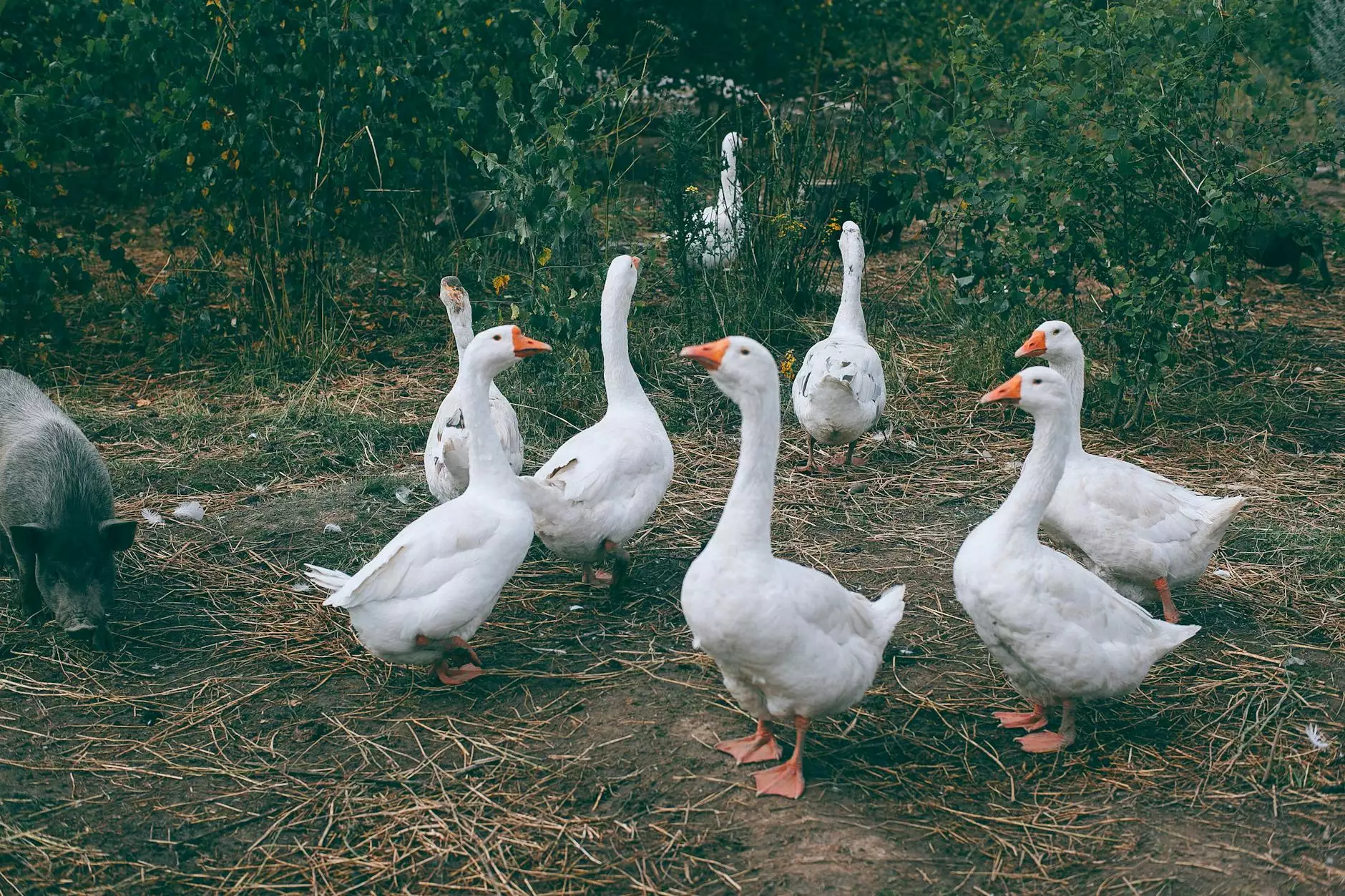Sus scrofa domesticus - The Domestic Pig

Welcome to Nibiru, your ultimate source of knowledge about the wonderful world of animals. In this article, we will explore the intriguing characteristics of Sus scrofa domesticus, commonly known as the Domestic Pig.
The Origins of Sus scrofa domesticus
Sus scrofa domesticus is a subspecies of the wild boar, Sus scrofa. It has been domesticated for thousands of years and plays a significant role in various cultures worldwide. Domestic Pigs have a rich history closely intertwined with human civilization.
Physical Appearance and Traits
Domestic Pigs come in a wide range of sizes and colors. They have a sturdy build with a rounded body, short legs, and a compact snout. Their skin can be pink, black, or a combination of both. Adult pigs typically weigh between 120 and 180 kilograms, but their weight can vary based on factors such as breed and diet.
One of the most distinctive features of the Domestic Pig is its snout, which is highly specialized for rooting in the soil. Their sense of smell is extraordinary, allowing them to detect food sources deep below the ground.
Behavior and Social Structure
Sus scrofa domesticus is an intelligent and social animal. In the wild, pigs prefer living in groups called "sounders." These sounders consist of several sows (females) and their offspring, led by a dominant boar (male). Within the sounder, pigs establish a hierarchical structure based on dominance, with the dominant boar at the top.
Pigs are known for their curious nature and display a wide array of behaviors. They are highly adaptable creatures and can survive in numerous environments. Domestic Pigs have retained many of their wild instincts, such as rooting, wallowing in mud, and building nests for their piglets.
Uses and Importance
Sus scrofa domesticus has been an important livestock animal for centuries. Pigs are primarily raised for their meat, commonly known as pork. Pork is a staple food in many cultures, providing a significant source of dietary protein. Additionally, various pig by-products, such as lard and gelatin, have culinary and industrial applications.
Pigs also have a vital role in scientific research. Due to their physiological similarities to humans, they serve as valuable models for studying diseases, genetics, and organ transplantation. The pig's contribution to medical breakthroughs cannot be understated.
Conservation and Environmental Impact
While the Domestic Pig is extensively bred, it is essential to consider its impact on the environment. Traditional pig farming practices have led to deforestation, water pollution, and greenhouse gas emissions. However, sustainable farming methods are being adopted to mitigate these effects.
Efforts are also being made to conserve and protect wild boar populations, as their habitats are increasingly threatened. Establishing protected areas and implementing conservation measures are crucial steps in ensuring the survival of this fascinating species.
In Conclusion
Sus scrofa domesticus, the Domestic Pig, is a captivating animal with a rich history and significant importance in our lives. Whether it is as a source of sustenance, a subject of scientific research, or a part of our cultural heritage, pigs have left an indelible mark on human society.
At Nibiru, we strive to provide you with the most comprehensive and accurate information about the wonders of the animal kingdom. Stay tuned for more fascinating articles and explore the remarkable diversity of life on Earth.










